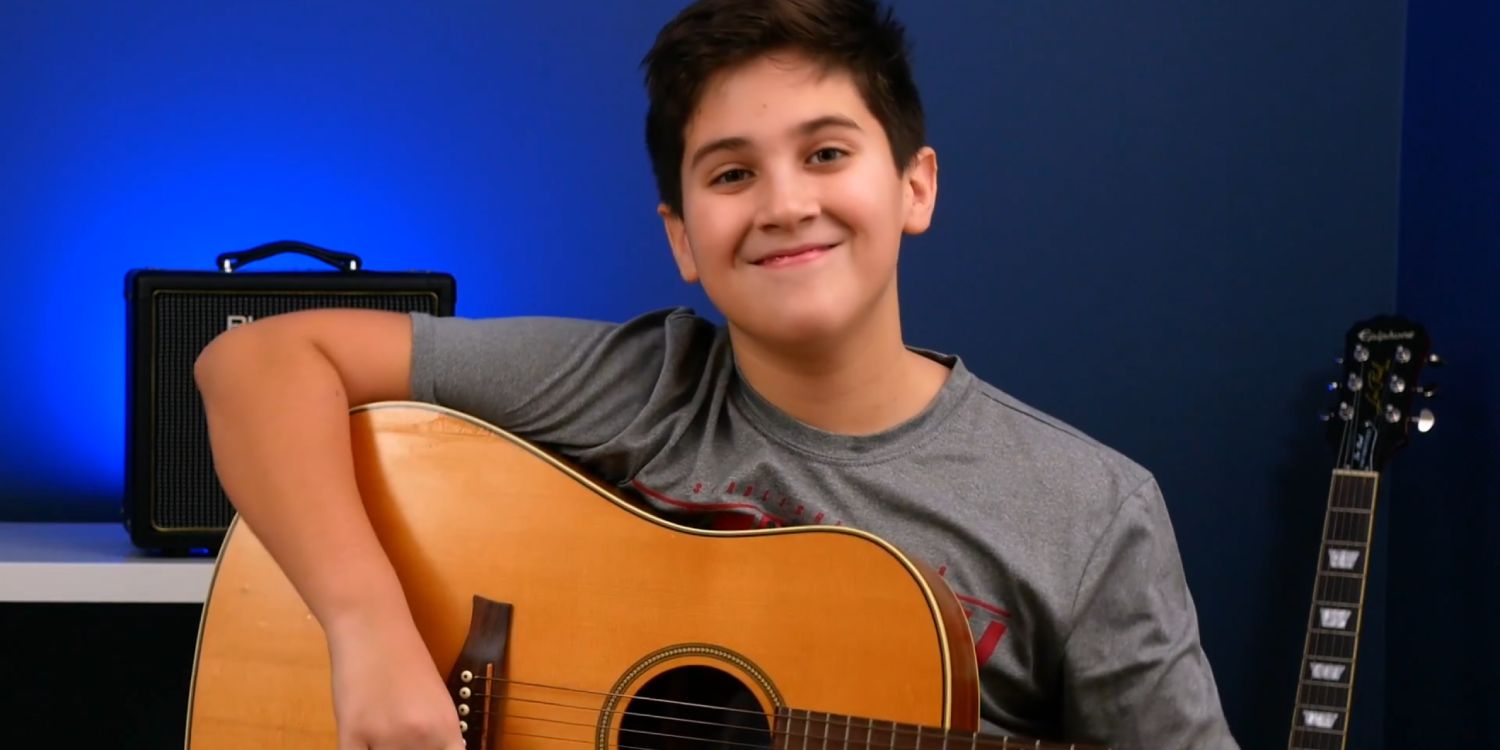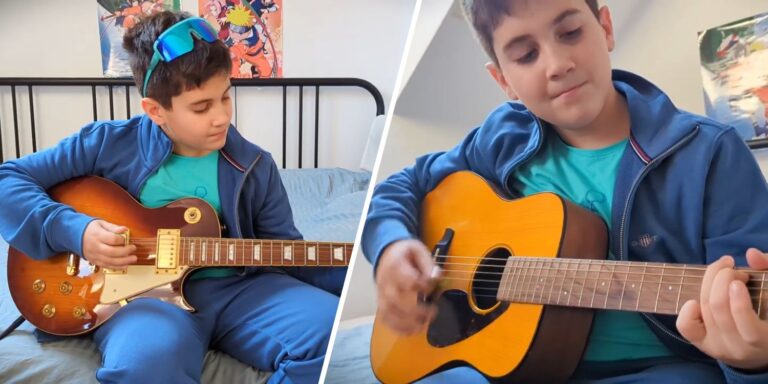If you've ever seen an 8-year old hold a full size guitar, it's like handing them a surfboard.
The truth is that 90% of parents pick the wrong size guitar for their child, either because:
- they don't realize kids' guitars come in different sizes, or
- they think "they'll grow into it".
In reality, they won't stick around long enough to grow into anything if it's frustrating from day one.
Here's exactly how to nail the sizing so your kid actually wants to pick up that guitar every day.
Kids Guitar Sizes, From Tiny to Full-Size
Let’s keep this simple and practical.
I’ll walk you through the four main sizes, what they’re good for, and how I match them to real kids in lessons.
I’ve tried every combo under the sun with students and my son Milan, so you’ll get the straight talk here.
The Four Main Sizes Explained
- 1/4 size (ages 4–6): To be honest, I've never seen such a young child care about learning to play guitar. I got my son a ukulele at age 6, and he broke the strings trying to play them with a handheld blender. But if you want a present or something, this is better than the 56th plushie.
- 1/2 size (ages 6–8): Some kids can start successfully at this age, but it is still rare below 8. These guitars are small enough to control, but big enough to learn real chords without struggling.
- 3/4 size (ages 8–12): This is the most common for elementary and early middle school. Lots of kids stay on this for years, and smaller framed adults even keep one or use it as a comfy travel guitar.
- Full size (ages 12+): Great once height and hand strength are there. Some 11-year-olds are ready, others need a little more time. No rush, comfort wins.
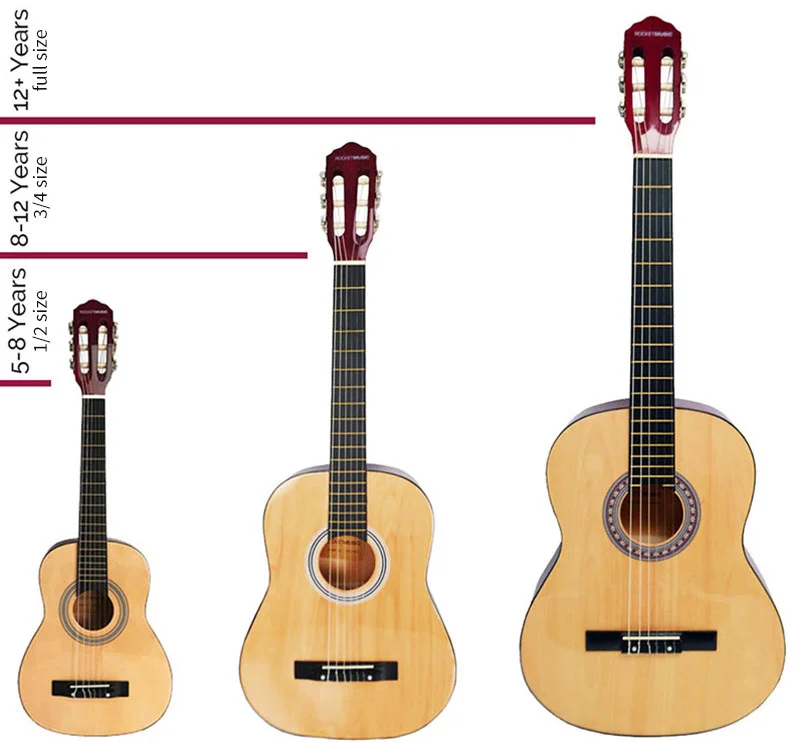
As you can see, there are huge differences in size.
I once had an 8-year-old show up with a full-size dreadnought gifted to the family. The parents didn't know any better. Sweet kid, but not a fun first lesson...
We swapped to a 1/2 size the next week and boom, 10 minutes later he was playing his first melody with a smile.
That’s the difference a proper fit makes.
Warning: Age Isn’t Everything
Age charts are a starting point, not a rule. I’ve put tall 11-year-olds on full size and kept shorter 13-year-olds on 3/4 with zero issues.
If the guitar fits, they’ll play more, complain less, and progress faster.
Pro tip: Just match the overall guitar length to about belly-button height when they’re standing. Weirdly specific, but it works well in the real world.
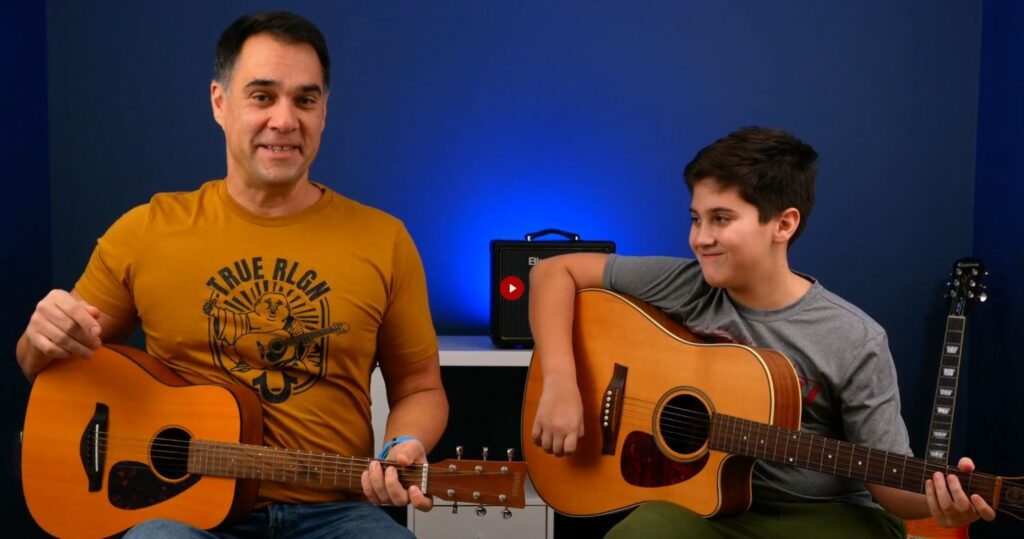
How to Know What Guitar Size Is Just Right
You need to know if a guitar actually fits your kid, and I'm going to show you the same tests I do with every new student.
No fancy equipment needed, just your eyes and common sense.
Quick checklist you can use instantly
If any of these is not true, your child needs a smaller guitar for now.
Lets go into all of this in detail.
The Simple Tests You Can Do at The Guitar Store
The strumming arm test is my go-to. Have your child hold the guitar in playing position (sitting down is fine). Their picking hand should hover over the sound hole area without having to stretch or scrunch up their shoulder. If they're reaching way out, their elbow is raised, or are hunching forward, the body's too big.
The finger stretch check is another one to check the fretting hand. Can they press down the 1st fret of the 1st string (bottom string) with their index finger while keeping their thumb on the back of the neck? This should look comfortable and be done with a bent elbow. If their wrist is all bent or their arm goes completely straight, the neck's too long for their hand span.
I also do a quick "comfort scan". Does your kid look relaxed or like they're wrestling with the thing? Trust your gut here.
What Proper Fit Actually Looks Like
When it's right, you'll see it immediately.
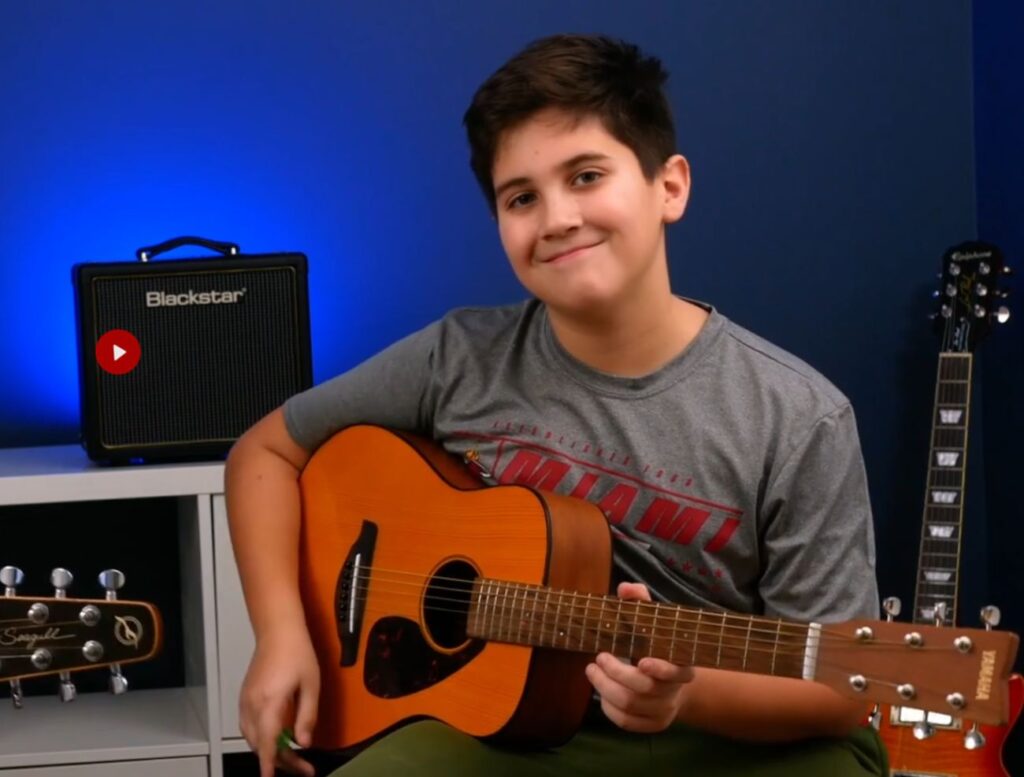
Their back stays straight, shoulders stay down, and both hands can move freely without strain.
The guitar should feel like an extension of their body, not a piece of furniture they're trying to manage.
Red flags that scream "wrong size":
If your child complains about their hand or arm hurting during the first few lessons, don't assume it's just "getting used to it." Nine times out of ten, it's a sizing issue. I've had parents bring kids thinking the discomfort was normal, only to switch sizes later and see immediate relief.
"They'll Grow Into It" - The Classic Blunder
This is hands down the biggest mistake I see. Parents somehow have a full-size guitar thinking their 8-year-old will eventually fit it.
Like buying shoes half-size larger. You know you've done it, I know I have 🙂
But the truth is they won't stick around long enough to grow into anything if they're fighting the instrument every day.
I had one mom bring in a beautiful full-size Martin for her 9-year-old daughter they inherited. Gorgeous guitar, way too big. The poor kid couldn't even get her arm around it properly. Obviously we switched to a 3/4 size, problem fixed.
The Curve Ball: Different Guitar Types, Different Sizing Rules
Now here's where it gets interesting and where most parents get thrown for a loop.
Not all guitars are created equal when it comes to sizing, even within the same "size category."
I first saw this early when a parent brought their kid a "3/4 size" electric that felt completely different from 3/4 acoustic guitars I was used to teaching on back in the day.
Classical Guitars (Nylon Strings)
Classical guitars have wider necks than other types, which actually makes them trickier for small hands in some ways. There is a trade-off in that those nylon strings are way gentler on little fingers, but I don't like using them since they are not versatile instruments.
Their body size tends to run a bit smaller than steel-string acoustics in the same category. So a 3/4 classical might actually feel more manageable than a 3/4 steel-string for the same kid.
Fun fact: many classical guitar teachers are pretty strict about sizing. They want that technique to be spot-on from day one, which makes the right fit super important for proper posture and hand position.
Acoustic Steel String vs Electric
Steel-string acoustics usually have bigger bodies than classical guitars in the same size range. A 3/4 steel-string dreadnought can feel larger compared to a 3/4 classical. Keep that in mind when shopping around.
I start beginners on acoustic steel string guitars unless they're set on a different sound.
Electric guitars are different. In a good way.
They often work for smaller hands because the necks are typically thinner and the strings sit closer to the frets. I've had 9-year-olds struggle with a 3/4 acoustic but nail it on a 3/4 electric. That slimmer profile is a great fit.
Plus, electrics don't need the big resonant body that acoustics do. So the overall dimensions can be more kid-friendly while still being labeled the same "size."
In fact, my son Milan could comfortably play my full sized Les Paul at 11, even though his acoustic size was 3/4 scale.
I wrote a separate article on choosing an acoustic or electric guitar for kids, here it is >>
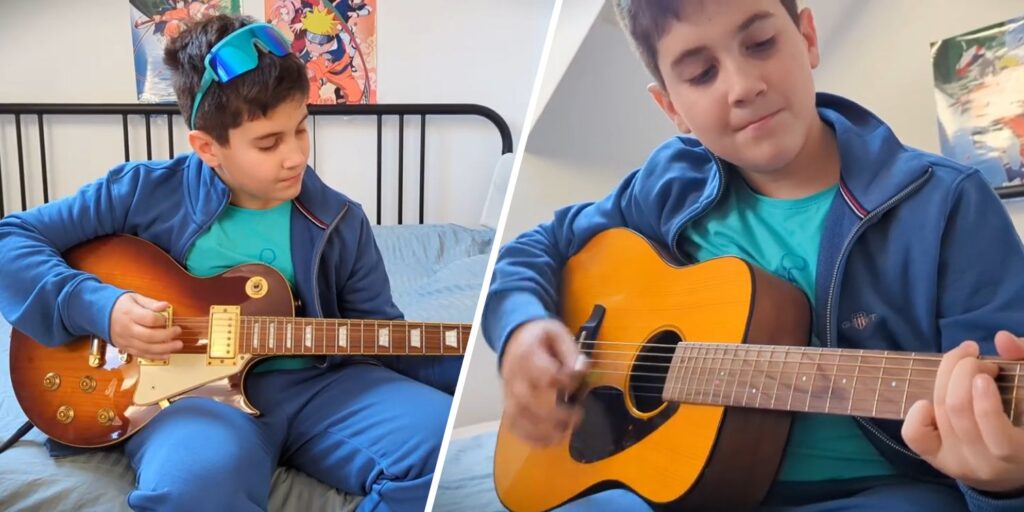
Here's my real-world advice on this: if your child is drawn to rock music and you're torn between sizes, try the electric version first. You might be surprised how much easier it is for them to handle.
Your Next Steps: Making the Right Choice
Don't overthink it or try to future-proof your purchase. A comfortable guitar that they can actually play will serve them infinitely better than a "perfect" one they'll grow into someday.
Quick recap for your guitar shopping trip:
- Measure their height, not just their age
- Bring them to try guitars in person if possible
- When in doubt between two sizes, go slightly larger if they're super close
Now stop overthinking and go get that kid the guitar they'll love to play.
I have a few kids guitar recommendations in this article >>

